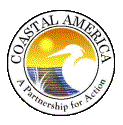



Glass Eel and Elver Passage Engineering on Existing Dams
Rational: The recent decline of the American eel (Anguilla rostrata) in North America is a cause for immediate concern among fishermen, fishery scientists, and managers (Castonguay et al. 1994a, Haro et al. 2000, ASMFC 2000, Stone 2003). These downward trends in abundance (both anecdotal and confirmed) appear to be synchronous over large spatial scales (e.g. Lake Ontario, New Brunswick, Prince Edward Island, New York, Virginia; Richkus and Whalen 2000) and mirror declines in catadromous eel populations world-wide (Anguilla anguilla, Anguilla japonica; Dekker 2003, Tatsukawa 2003). A number of hypotheses have been suggested to explain these observed patterns: over-fishing of pre-spawning stages (i.e. estuarine residents; McCleave 1996), changes in the strength / position of major current systems (Castonguay et al. 1994a, b; Wirth and Bernatchez 2003), and habitat loss (Busch et al. 1998), including that due to dams.
Project Purpose: The goal of the project is to provide passage for American eel elvers over three dam spillways in southern New Jersey utilizing low technology methods that would be potentially applicable to retrofit other small dams throughout the region and elsewhere along the east coast of the U.S. The project would include a monitoring component to evaluate the efficiency of the various techniques to be used and result in the selection of the optimal technique.
Brief Description: Glass eels and elvers of the American eel are known to congregate at the base of dams/spillways at Lake Pohatcong (Borough of Tuckerton, Ocean County), Manahawkin Lake (Stafford Township, Ocean County), and Bargaintown Lake (Egg Harbor Township, Atlantic County) as well as other dams in the region and on the east coast of the U.S. during their upstream migration during the winter – early spring. These dam spillways present a barrier to the migration of this species to upstream freshwater habitat required to complete their catadromous life cycle. In order to increase the number of eels passing above these barriers we are proposing to test the efficiency of three types of low-technology, low cost eel passage devices at each spillway. The first device consists of burlap sacks sewed together and placed along the face of the spillway, thus reducing the velocity of water coming over that portion of the spillway and providing suitable textured substrate for the eels to navigate over the spillway and thus upstream. The final two devices are variations of the same theme; both employ a medium diameter PVC pipe laid along the face of the spillway. One PVC pipe device is filled with woven mesh soil erosion matting while the other PVC pipe device is filled with damaged braided nylon trawl mesh. In both cases the filling in the tube serves to reduce water velocity and provide the textured surface needed by the glass eels and elvers to climb up the pipe and gain access to upstream habitat.
On all devices a collection system (generally a 1mm mesh bag) will be installed on the upstream end to allow for a count of the number of eels utilizing each passage device and, subsequently, the determination of size and pigmentation stage on a subsample. The collection of the samples will be conducted by volunteers of the Jacques Cousteau National Estuarine Research Reserve (JCNERR) with participation and oversight by a member of the Rutgers University Marine Field Station (RUMFS). Length and pigmentation stage determination on a subset of the sample will be conducted at RUMFS. Those individuals not retained as part of the subsample will be returned to the water in the vicinity of the upstream end of the passage device. It is anticipated that the devices will be placed on the spillways prior to eel in-migration in February and sampling will continue on a twice weekly basis until the end of the elver migration, typically in April. We will determine general availability of glass eels, based on our long-term (20-year) sampling program inside Little Egg Inlet (Witting et al. 1999, Sullivan et al. 2006), and glass eel and elver availability at the base of the dams with eel collectors (Sullivan et al. 2009). In the process, we will be able to evaluate whether passage over a dam is related to the availability of eels downstream from the dam. Further, at Bargaintown Lake, we will correlate the abundance of eels arriving with the fyke net surveys by the NJ Division of Fish and Wildlife sampling program.
Resource values / Project Outputs: This project will evaluate restoration techniques for American eel migration to three waterways from which they have been denied access. Further, the results of the monitoring program will allow for an evaluation of three low-cost passage devices that could be retrofitted to existing dams throughout the region, and elsewhere along the east coast, potentially restoring American eels to large components (Lake Pohatcong drainage area of 12.3 square miles, Manahawkin Lake drainage area of 19.7 square miles) of historic habitat from which they have been excluded.
Cost/Budget: $40,000 total budget
List of Partners and Anticipated Support: Rutgers University Marine Field Station (access to laboratory space and expertise), Jacque Cousteau National Estuarine Research Reserve ($10,000 equivalent volunteer support), US Fish and Wildlife Service ($15,000 requested), and NJ Division of Fish and Wildlife (access to existing and ongoing glass eel sampling data)
CWRP contributed: $15,000 to the restoration effort


